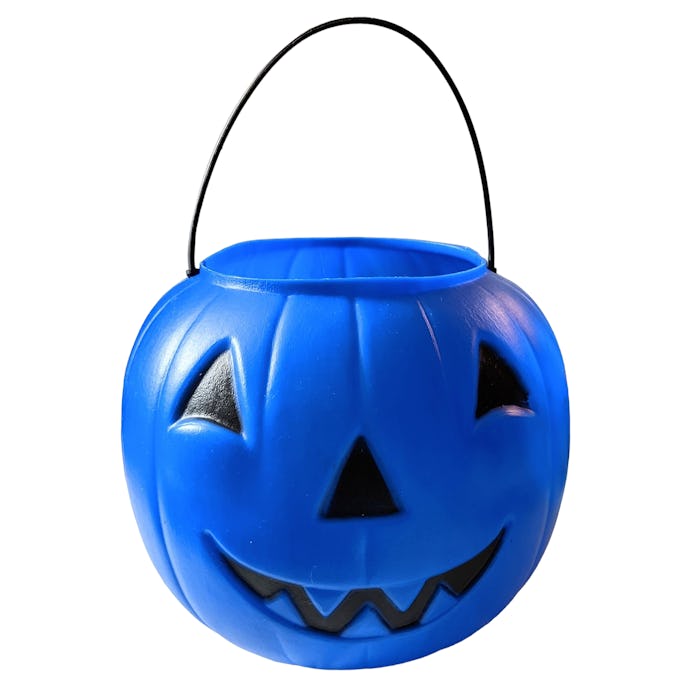Trick Or Treat

Here’s What It Means If You See A Blue Pumpkin Bucket This Halloween
Aside from “insert treats here.”
If you notice a trick-or-treater carrying a blue pumpkin bucket this year, it may convey a message. So what does a blue pumpkin mean on Halloween? It could be a subtle way to let others know more about the person who is out trick-or-treating: specifically, that they have autism and are nonverbal, so they may not say the usual “trick or treat” and “thank you” you’d expect.
The idea started in 2018 when mom Alicia Plumer wanted to let neighbors know her 21-year-old son, who has autism, was trick-or-treating by using a blue bucket. Basically, the blue bucket acted as a signal that he was not in fact “too old” to be out trick-or-treating. What started as a sort-of heads up Facebook post for neighbors caught a lot of attention (because it’s a great idea, to be honest), and the post went viral, generating over 27,000 shares and 17,000 reactions.
While it started as a grassroots movement, the National Autism Association adopted the practice in 2020. “For those who choose to use them, the blue bucket can promote a feeling of independence by providing a subtle, dignified way of alerting people that the child or young adult at their door may not be able to participate in all of the traditional aspects of trick or treating, but they certainly deserve to enjoy the night as much as everyone else,” says Wendy Fournier, president of the National Autism Association, in a blog on the groups website.
As the word about blue pumpkins has spread (and teal ones for allergy awareness, too), you may see end caps and store shelves stocked with extra pumpkins in these hues. Indeed, a photo going viral on X, formerly Twitter, shows a big display of blue pumpkin buckets on sale at Walmart.
Not everyone with autism is nonverbal, but for some, it can make it harder to communicate — especially on a holiday where the whole exchange of candy thing is based on shouting “trick or treat” over and over again. So, the blue pumpkin pail is a nudge to let others know that while the kid holding the bucket may not respond to you, don’t think twice about it. Give ‘em the goods and compliment their costume, while you’re at it. The National Autism Association also has printable trick-or-treat cards available for free on their website, if your child wants a way to express their thanks without speaking.
Parents with kids on the spectrum may choose to celebrate this holiday in all sorts of ways, and will know best whether carrying a blue pumpkin and handing out cards is right for their child or not. It’s just nice to see that there are more tools and tricks available today to make trick-or-treating fun and inclusive for everyone.
This article was originally published on